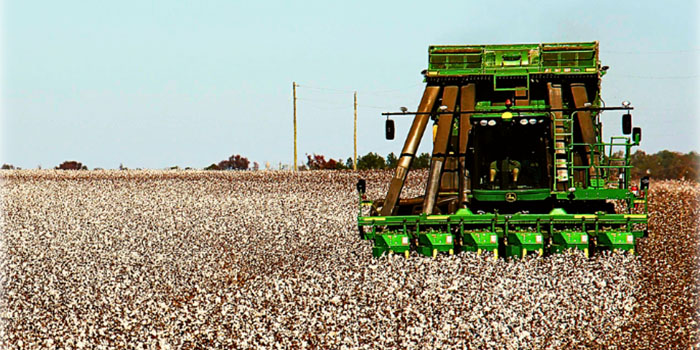|
|
| That nip in the fall air means pumpkin season is here. |
From home harvest scenes to commercial advertisements,
pumpkins have become the
standard backdrop from early October to Thanksgiving. They’re
not
just for Halloween
anymore.
Georgia’s commercial pumpkin production is relatively small.
But interest in pumpkins
extends to almost everyone.
From the home gardener to the 4-H Club competition, trying to
grow the biggest pumpkin
continues to fascinate people. Miniature pumpkins are just as
popular. Pie pumpkins are
the choice for cooking. And about the last week in October,
almost everyone turns his
attention to the search for the perfect jack-o’-lantern.
Pumpkins, Entertainment
Farms
Pumpkins have become the centerpiece of the entertainment
farming business.
Entertainment farming is a term used for farms offering tours,
hayrides, carving classes
and field trips as part of their sales business.
What could be better than a trip to the country in the fall
air, taking a hayride
through the fields, sampling fresh-made pumpkin bread or pumpkin
pie and carrying home the
perfect pumpkin?
|
|
| Pumpkins mean fun on north Georgia “entertainment farms.” |
Georgia grows about 500 acres of pumpkins, not counting the
backyard bounty. However,
most pumpkins sold in Georgia come from Tennessee, North
Carolina, Ohio and Indiana.
Don’t Expect World
Record
In south Georgia, disease and insect problems hinder
production. But pumpkins grow
quite well in north Georgia. Just don’t expect to grow a world
record pumpkin anywhere in
Georgia.
The largest pumpkins recorded for Georgia are in the 350- to
400-pound range. The world
record stands above 1,000 pounds. The record-setters were grown
in either Europe or
Canada, where the climate is much milder.
Pumpkins grow on vines that require a lot of space. That often
limits home gardens.
However, many newer varieties have restricted vines or bush-type
vines and can be grown in
smaller areas. This is particularly true for the miniatures.
Most miniature pumpkins are actually gourds. The unique shapes
and colors and
diminutive size make them ideal for decorative displays.
White Pumpkins for
Artists
|
|
| A white pumpkin makes a perfect canvas for a skilled artist. |
An interesting oddity is the white pumpkin. White on the
outside and orange inside,
these pumpkins have become increasingly popular for painting. The
white exterior makes the
perfect canvas for the skilled artist. These works of art won’t
take a place alongside the
Mona Lisa in 100 years, though. They will decay over time.
While many of our vegetables come from other continents,
pumpkins originated in the
Americas. Production in south Georgia is a challenge, but not
impossible. Recent and
upcoming advances in pest control and disease-resistant varieties
may one day make it much
more feasible.
Pumpkins are usually planted in May and June in north Georgia
and June and July in
south Georgia. Depending on the vine type, they require 15 to 50
square feet of space per
plant. Varieties usually require 75 to 120 days from planting to
maturity.
Pumpkins fare well with organic fertilizer amendments, since
they’re not heavy users of
nitrogen. To try your hand at growing your own crop, consult your
county extension office.
Buy Fully Mature
Pumpkins
If you prefer to buy your pumpkins, always look for one with a
good strong handle that
has no damage. Fully mature pumpkins will most often have a dull
sheen and will be of the
color typical for that variety.
Pumpkins that are damaged or not fully mature when they’re
picked will have a short
shelf life. Even when picked ripe, most pumpkins will store for
only one to four months.
Southern-grown pumpkins store less than that.
Pumpkins can be a great source of entertainment, whether at
the entertainment farming
venue or in your own back yard. Arrange a table display with
miniatures. Carve your own
jack-o-lantern. Make pumpkin pie from an old family recipe.
Whether you paint a unique picture on a white pumpkin canvas
or just brag about having
the biggest pumpkin at the fair, pumpkins always bring fun to
fall.







